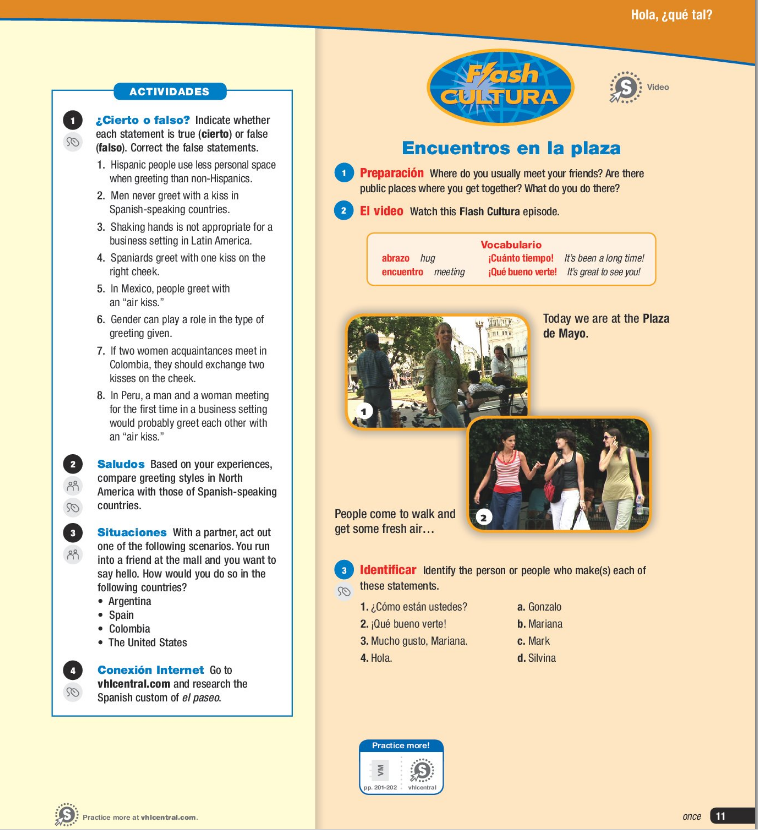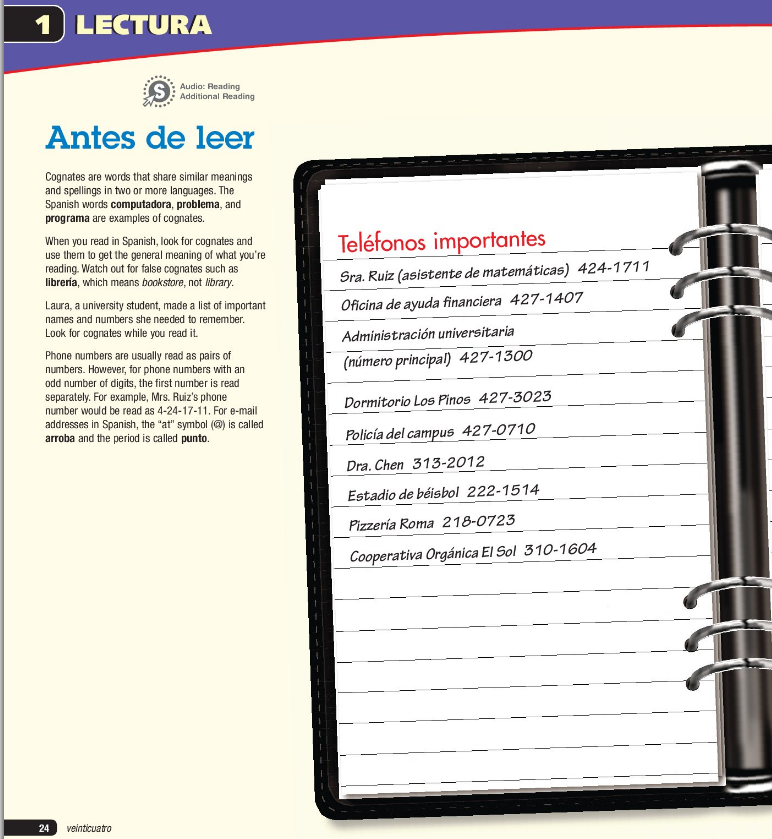Interpretive, Interpersonal, and Presentational Modes of Communication
Instructions
Exploring Culture
Reading the cultura from VHL helped give me insight into hispanic culture. I also learned from meeting my girlfriend’s family and getting insight in to their culture.
The Cultura lessons from the book gave a lot of interesting insight into different aspects of Hispanic culture, such as school systems and last names. I got to explore aspects of the culture that I’d never even given a second thought. I especially liked that it covered culture from many different countries. I also learned about Mexican culture firsthand from my girlfriend’s family. I got to see different practices and try all sorts of different foods. Exploring different cultures has always been of interest to me so I’m glad I got to do it.

Engaging in Communities
I feel that engaging with your community, both local and global, is a very important and enriching experience.
In terms of global communities, I mostly participate in online communities surrounding things like shows or games that I’m interested in. These can take place on websites such as discord or twitter. As far as local communities, I haven’t done much recently due to the pandemic but I do help out with the animals at a local petting zoo sometimes.


Interpersonal Communication
In this class, there was a lot of practice with interpersonal communication. We had breakout discussions through zoom and discussion boards. We also had interviews, though we had more time to prepare and practice for those.
Spontaneous interpersonal communication, mostly in breakout rooms was scary at first. I was stressed about getting the spanish right and not looking stupid in front of classmates. Surprisingly it was a lot easier than it seemed and my classmates were very helpful if I got stuck.
Presentational Speaking
Presentational speaking has primarily taken place in the form of interviews . There was also some presentatiohnal speaking in class breakout rooms.
In the interviews, the primary issue for me was nerves. The second interview in particular, in which I talked about my family, I was stressed out despite practicing for it a lot. I ended up doing well on it despite my stressing, so I wasn’t as worried for the third “interview”, although it was really more of a presentation.
Presentational Writing
Presentational writing for this course took place in the form of compositions as well as essay questions on tests.
Spanish-CompositionPresentational writing is probably the aspect that I struggled with least. This is because I had time to really think it out and rewrite stuff if I needed too.It’s a lot less stressful than things that happen in real time such as listening or speaking. There was also SpanishDict, which helped me translate words that I either didn’t learn or just struggled to remember. I wouldn’t have access to such a tool outside of interpretive writing
Interpretive Listening
For the most part, interpretive listening consisted of some VHL activities as well as some test questions. Additionally, in class breakout rooms I had to listen to and interpret my classmates
Interpretive listening was one of the things I dreaded most going into this class. Having taken some french in the past, I knew that reading/writing and listening/speaking are two totally different worlds. Surprisingly, it wasn’t too bad. Even if it took a second or third listen, I could usually understand interpretive listening questions. I think breakout rooms where I spoke in Spanish with other classmates helped a lot in this regard. I also got practice outside of class. My girlfriend happens to be Mexican and when we’re with her family they all primarily speak Spanish. While it’s a bit more advanced than what I know, I always try and see what I can understand as practice. By practicing both in and outside of class I think that my interpretive listening improved significantly.
Interpretive Reading
Interpretive reading was also something I got to practice with through VHL and classwork. Assignments like the Lecturas helped me improve.

The bulk of my interpretive reading practice came from homework like the Lecturas. I always found interpretive reading somewhat easy relative to listening. It’s a lot easier to read over a sentence multiple times to understand it than it is to listen. Whenever I was stuck, I was able to look at surrounding sentences for context clues.